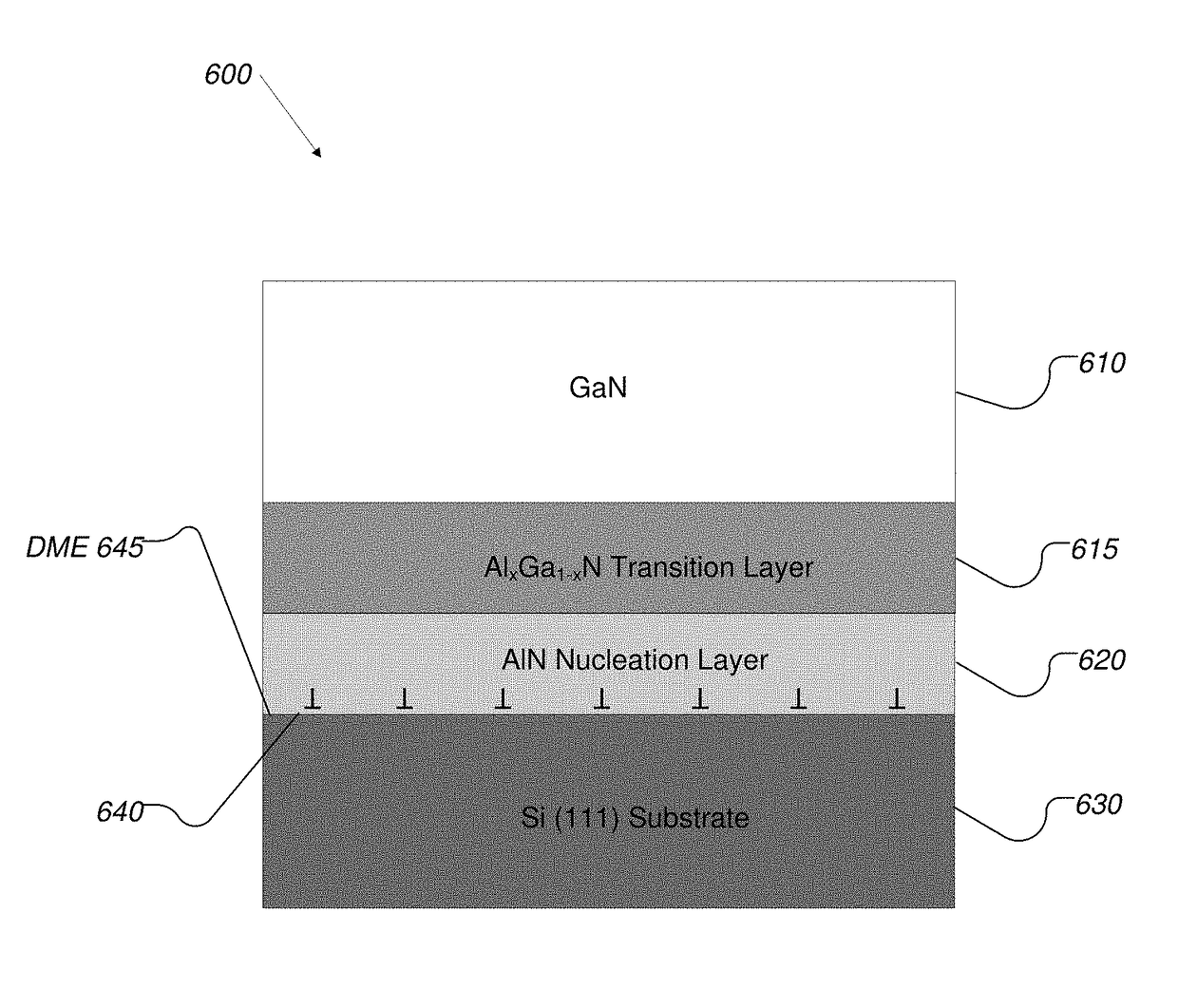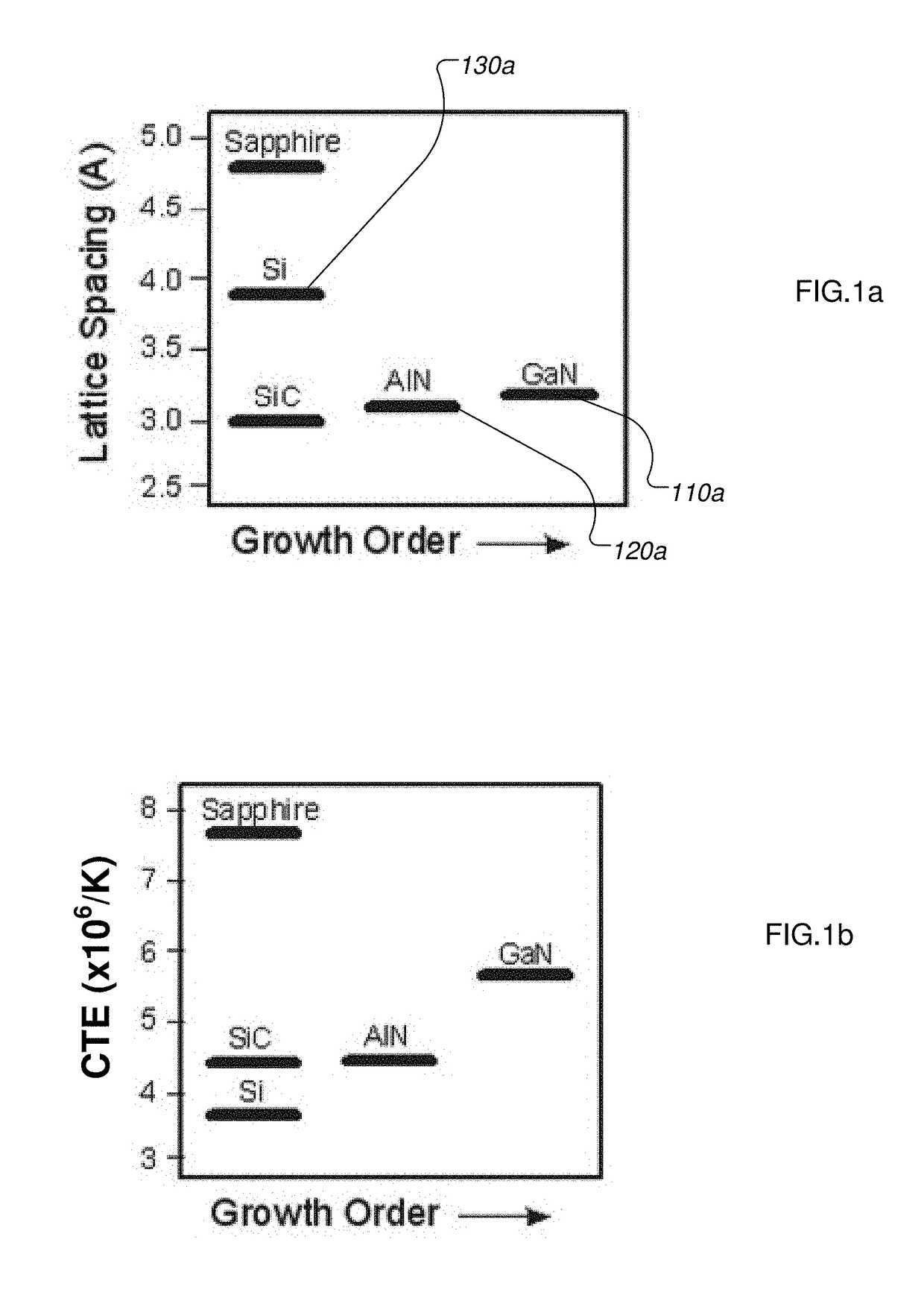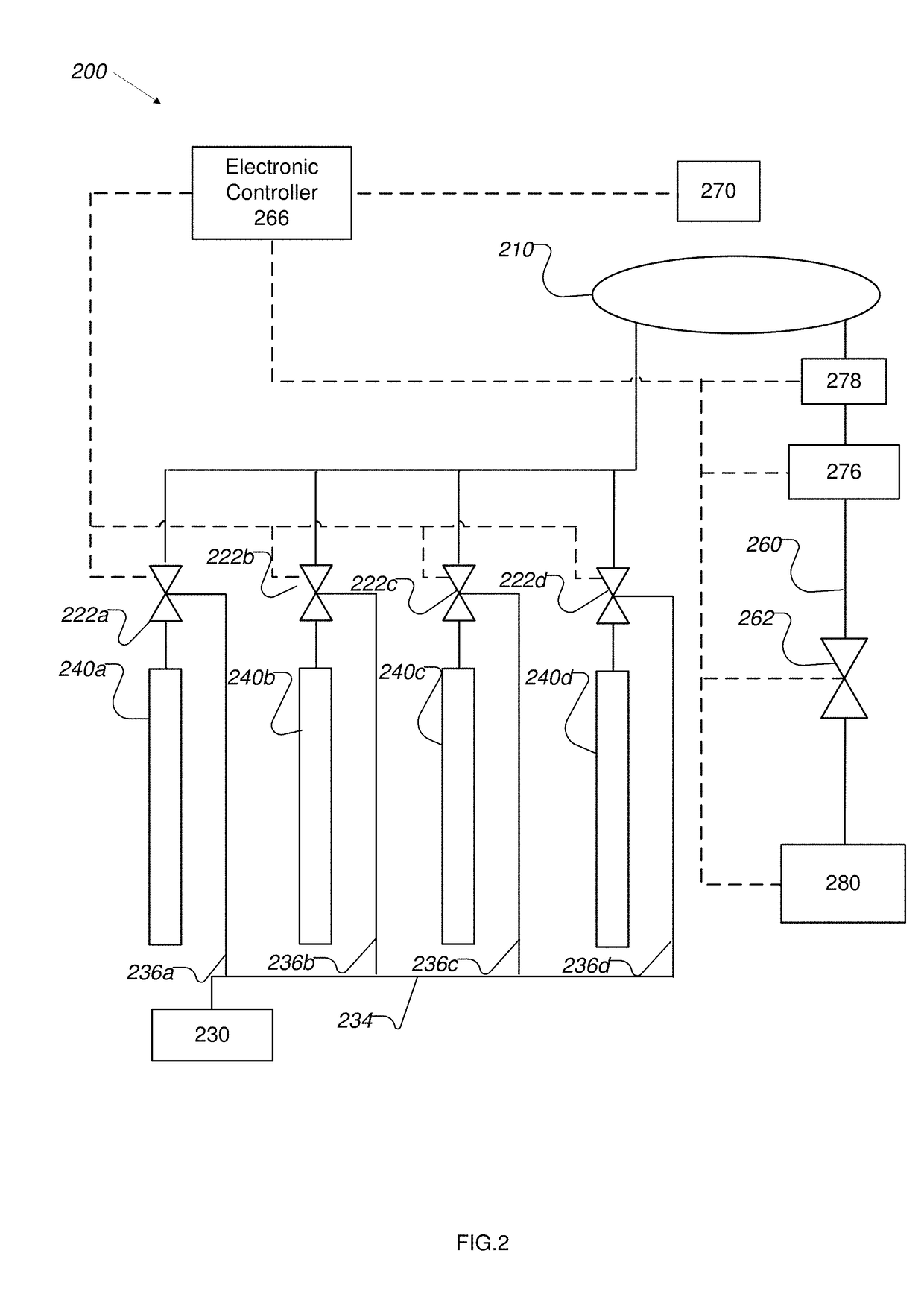Method and apparatus for forming device quality gallium nitride layers on silicon substrates
a technology of gallium nitride and thin film, which is applied in the direction of polycrystalline material growth, chemically reactive gas growth, crystal growth process, etc., can solve the problems of silicon devices that silicon devices have significant limitations in power applications, and silicon devices have failed to provide the desired electrical properties in many applications. , to achieve the effect of improving the crystal lattice structur
- Summary
- Abstract
- Description
- Claims
- Application Information
AI Technical Summary
Benefits of technology
Problems solved by technology
Method used
Image
Examples
Embodiment Construction
5.1 Exemplary System Architecture
[0040]According to one aspect of the present invention Atomic Layer Deposition (ALD) is used to deposit thin films onto planar and non-planar silicon substrate surfaces in processes related to the manufacture of solid state electronic devices. According to one aspect of the present invention ALD deposition film growth or film deposition described herein is preferably conducted at reaction temperatures ranging from 80-400° C. wherein substrates are housed in a reaction chamber and maintained below atmospheric pressure e.g. at a pressure ranging from 1-500 mTorr (milli-torr) during the film deposition process. Notwithstanding the desirability to limit ALD reaction temperatures to the preferred range of 80-400° C., ALD reaction temperatures ranging from 80-800° C. may be used without deviating from the present invention. Specifically, the reaction temperature means the temperature of the substrate being deposition coated and the temperature of the depos...
PUM
| Property | Measurement | Unit |
|---|---|---|
| reaction temperature | aaaaa | aaaaa |
| reaction temperature | aaaaa | aaaaa |
| reaction temperature | aaaaa | aaaaa |
Abstract
Description
Claims
Application Information
 Login to View More
Login to View More - R&D
- Intellectual Property
- Life Sciences
- Materials
- Tech Scout
- Unparalleled Data Quality
- Higher Quality Content
- 60% Fewer Hallucinations
Browse by: Latest US Patents, China's latest patents, Technical Efficacy Thesaurus, Application Domain, Technology Topic, Popular Technical Reports.
© 2025 PatSnap. All rights reserved.Legal|Privacy policy|Modern Slavery Act Transparency Statement|Sitemap|About US| Contact US: help@patsnap.com



